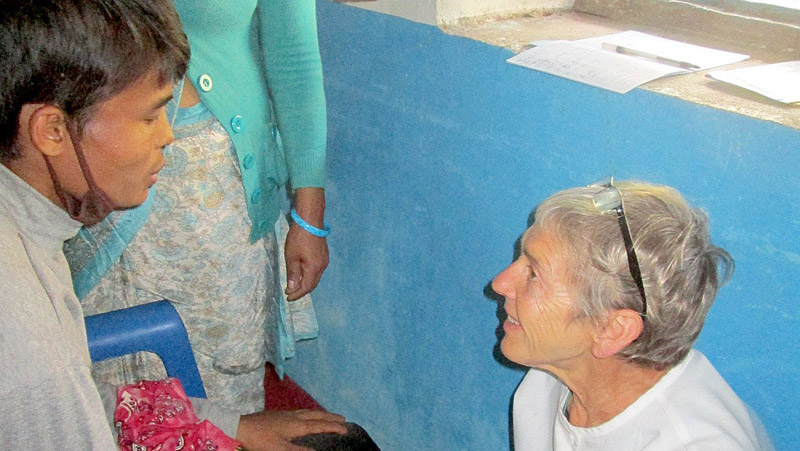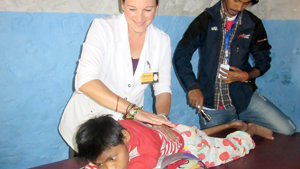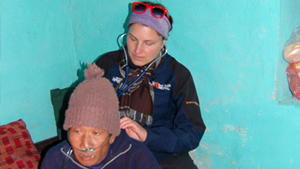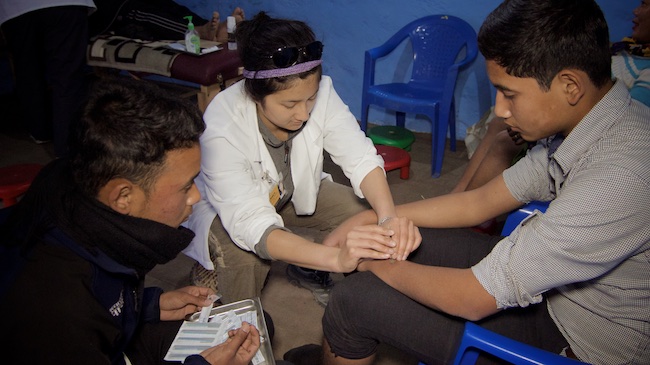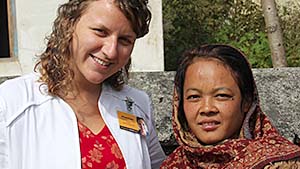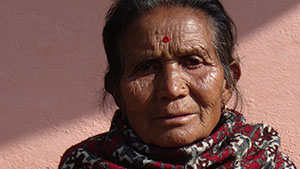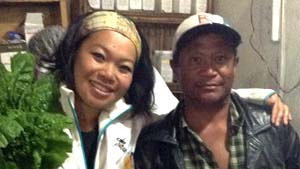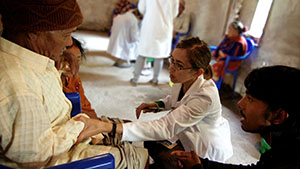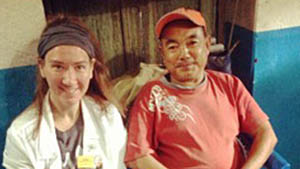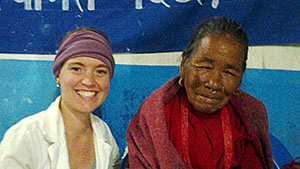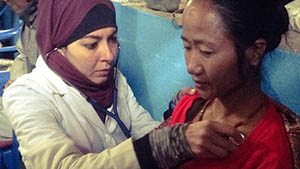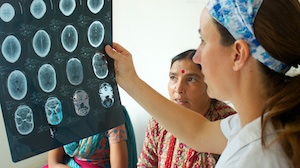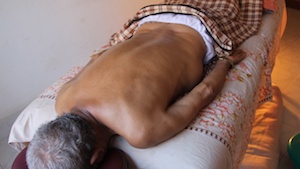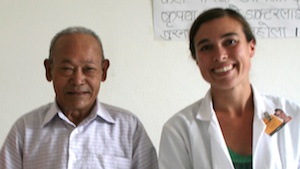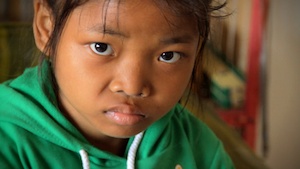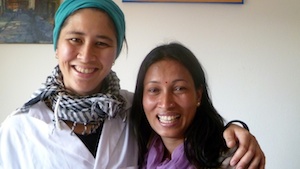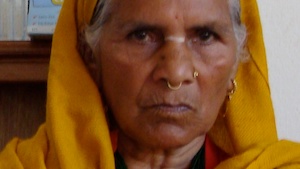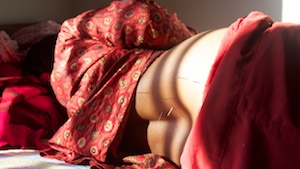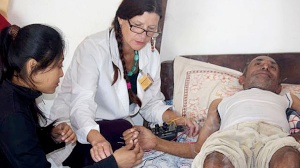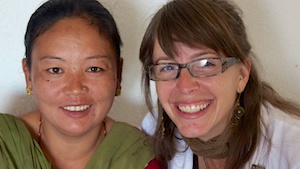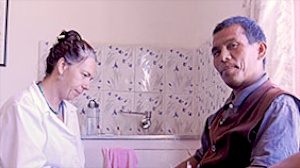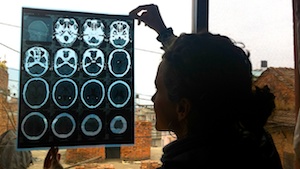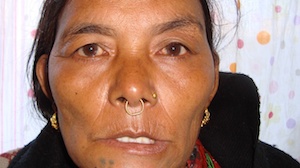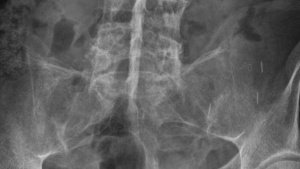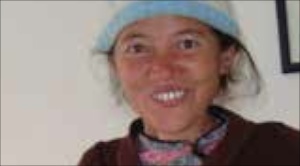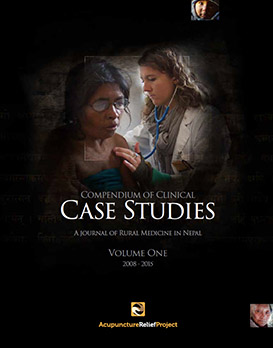Sarah Richards LMT
December 2012
OVERVIEW
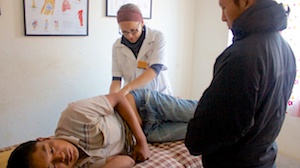 30-year-old male presents with severe back and left leg pain, exhibiting postural deviation as a way to relieve pain from an L5/S1 disc herniation. When prescription of daily acupuncture and massage was followed diligently, patient experienced a more dramatic reduction in pain, improved posture and attitude.
30-year-old male presents with severe back and left leg pain, exhibiting postural deviation as a way to relieve pain from an L5/S1 disc herniation. When prescription of daily acupuncture and massage was followed diligently, patient experienced a more dramatic reduction in pain, improved posture and attitude.
Subjective
30-year-old male patient presents with severe back and leg pain on left side, with severe postural deviation to relieve pain. Symptoms began 7 months ago with no known cause. Patient has, however, throughout his life, carried heavy bags of rice on his back and head. He complains of sharp pain and stiffness with movement, when standing from sitting or squatting and when walking up stairs. Sharp pain wakes patient at night with movement of left leg or twisting to turn over.
After getting an MRI patient is told that he has a “compressed bone” in low back, but does not know the specifics. He expresses his desire to delay or avoid surgery for his condition.
Pain medication does not provide any relief, and he intentionally stands “crooked” to alleviate severe pain in his low back, but then tries to over-correct in order to look “normal.” He denies experiencing pain or discomfort in upper back or neck. (See photos)
OBJECTIVE
An MRI taken 15 weeks ago appears to show L5/S1 disc herniation with L4/5 disc desiccation, as reported in radiology report. Visual observation of the torso shows lateral curvature of the spine and depression of the left scapula (see photos). When not weight-bearing, lying on massage table prone or supine, spinal curvature corrects to more normal alignment and shoulder blades relax in neutral position.
While standing, and asked to actively straighten his spine, patient feels pain in lower back on the left side with radiating pain in the left lower leg. Trunk flexion produces pain when patient’s fingers are 8 inches from the ground, with pain felt in lower back on the left side with radiating pain in the left lower leg. Trunk extension produces pain in low back only, without radiation, and a left straight leg raise elicits pain at 45 degrees. A left side bend test produces pain in low back, with tingling and radiating pain to lower leg while right side bend elicits no pain.
Mood changes are noticeable and vary depending on level of pain each day, ranging from sullen and angry to hopeful and excited.
ASSESSMENT
DX: L5/S1 disc herniation with L4/5 disc desiccation causing severe lower back pain with radiating symptoms to left lower leg
PROGNOSIS: In order to have a long-term positive impact on the patient’s condition, it will likely require frequent treatments for many months. Since the patient travels more than 1 hour to the clinic, often by foot, it is improbable that compliance to a long-term, daily treatment plan is realistic. Consequently, a significant lo
INITIAL TREATMENT PLANng-term result is doubtful.
Daily acupuncture and massage therapy focusing on pain relief for 10 treatments before reassessing.
Typical massage tx: 30-40 minute sessions focusing on releasing fascial and muscular restrictions to reduce compressive forces on affected disc and nerve root, thereby decreasing pain and inflammation giving the disc a chance to heal, and allowing the patient to stand with proper alignment and return to work and regular activities.
OUTCOME
After 14 acupuncture treatments and 11 massage sessions, patient reported mixed results based on frequency of care. Missing only 1 day of massage or acupuncture did not produce a significant set back. However, there was a 5-day break in co-treating, in which the patient received only 3 acupuncture treatments, no massage therapy and experienced a decrease in progress. Subsequently, after missing massage appointments 5 days in a row, the patient returned complaining of an increased pain level; a level similar to which he had been experiencing prior to beginning treatment, stating a pain level of 6 out of 7. Upon returning to the subscribed daily treatment plan, after only 3 treatments consisting of both modalities on the same day, patient reported improvement of low back pain from 6 down to 4, as well as an improvement in posture and mood. As seen in the before and after photos, the change in posture was significant. These pictures were taken immediately following an acupuncture treatment.
Massage techniques that provided the most relief and change for the patient include friction to address bilateral, lumbar paraspinal and erector spinae musculature, compression and friction of the sacral origin of gluteus maximus, tensor fasciae latae and quadratus lumborum (QL). Fascial release to the thoracolumbar region, utilizing flexion of low back in child’s pose (a pain-free position for this patient) proved to be particularly helpful and was thought to be most productive by the patient. In addition, while in child’s pose, having the patient flex laterally allowed access to the transverse processes insertion of QL. In a side-lying position, inferior distraction of the left ilium provided significant and immediate relief to patient. Passive stretching of the left side body, including obliques, QL and latissimus dorsi while patient was supine, added to the ability of the patient to stand taller and straighter.
It is interesting to note that by working primarily on the painful left side, his posture improved and pain decreased more quickly and efficiently than by working primarily on the right side or more bilaterally. (See photos)
Patient was advised to avoid twisting movements and carrying heavy objects. He was also counseled that creating lasting reduction of pain would take many treatments. In order for treatment to have a chance to help him avoid surgery, he will need to take it easy and not push himself to do heavy work, even once he
starts feeling better, allowing the tissues time to heal
CONCLUSION
Unfortunately, more data could not be collected in this case because the patient discontinued care after only 3 weeks of treatment in order to visit family. Had I been able to continue to treat this patient, I would add abdominal and psoas major releases. I would recommend a course of anti-inflammatory medication and add a component of self-care and education in order to avoid further or recurring injury to the disc.
With frequent visits, his acute symptoms responded to the cotreatment plan of daily acupuncture and massage fairly quickly - within 3 visits. The 2 modalities, combined, show more promising results than just 1 on its own. Overall, it is promising to see how cotreating, specifically with acupuncture and massage therapy, can have a positive short-term outcome on pain and posture associated with disc herniation














